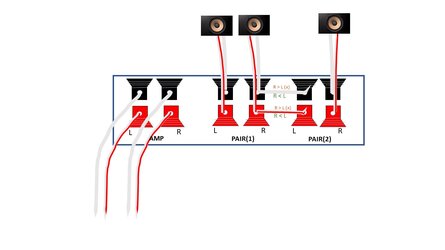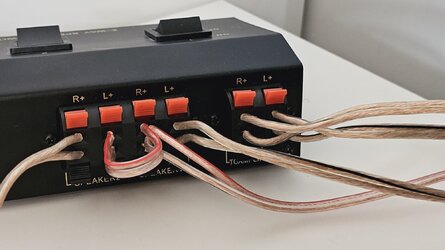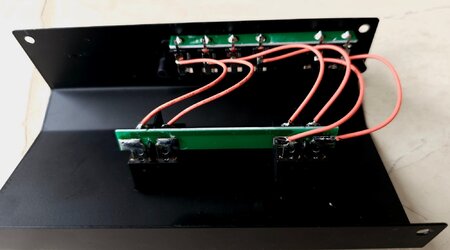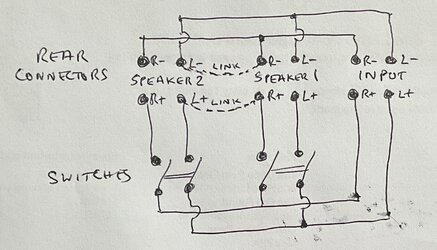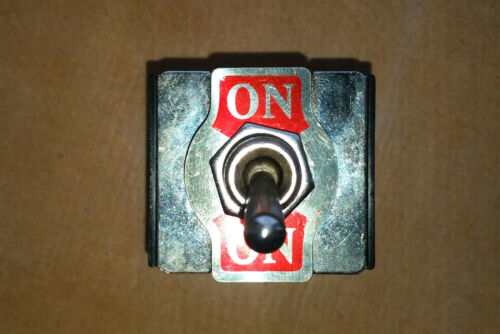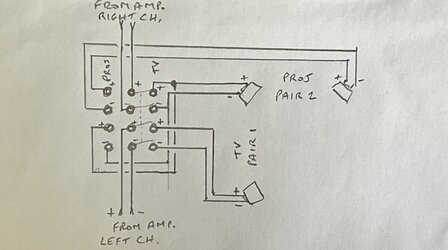Firstly, I hope it is ok to discuss the wiring of speakers here. TBH my ignorance in all things electrical knows no bounds, and I am guessing it is a discussion about ohms, of which I have less idea about than watts.
To that end, I would appreciate any responses in the simplest of terms. Once again, I apologise if this is the wrong forum, as I suspect it is attended by many large brains that would rather speak in 'scientific' terms. However, my question is more 'theory' rather than 'straight electrical'.
The question relates to using a sound system with a TV on one wall which is perpendicular to a projector screen on another. The TV has Front Left and Front Right speakers located above it ...the idea is to 'switch' the Front Right to becoming Front Left (the projector), and Front Left to a separate speaker.
I bought a two-way speaker switch box from Amazon. I guess it is obvious to say that this is normally used to switch the input to two pairs of output.
In my case, I have speaker cable running to a single speaker on Pair(1) Right BUT ALSO 'jumpering' to Pair(2) Left.
As you may surmise, Pair(1) Left goes to a speaker, and Pair(2) Right goes to a speaker ...so three speakers in total.
If I think of this as 'direction of flow' when I select Pair(1), the Input(amp) is directed to Pair(1) Right speaker, and is 'dead ended' to Pair(2).
I turn off Pair(1) and select Pair(2), in which case, Input(amp) is directed to Pair(2) Left speaker, and Pair(2) Right jumpered to the twisted/join in Pair(1) speaker.
Hopefully I have explained that well enough (don't think a picture would actually provide any clarity)
This works ...but, sometimes my speakers just 'cut out'. Strangely (and please don't shout at me), if I increase the volume on the TV, it suddenly comes on and I deafened until I quickly turn the volume down. My initial theory was that it was the amp cutting out, but I considered that turning the volume up shouldn't resolve the problem, and so I believe it to be the switch.
So, my question is 'could this be considered a legitimate use of the switch, or am I doing something so stupid that I should expect it to cut-out?'
Thanks for your time.
To that end, I would appreciate any responses in the simplest of terms. Once again, I apologise if this is the wrong forum, as I suspect it is attended by many large brains that would rather speak in 'scientific' terms. However, my question is more 'theory' rather than 'straight electrical'.
The question relates to using a sound system with a TV on one wall which is perpendicular to a projector screen on another. The TV has Front Left and Front Right speakers located above it ...the idea is to 'switch' the Front Right to becoming Front Left (the projector), and Front Left to a separate speaker.
I bought a two-way speaker switch box from Amazon. I guess it is obvious to say that this is normally used to switch the input to two pairs of output.
In my case, I have speaker cable running to a single speaker on Pair(1) Right BUT ALSO 'jumpering' to Pair(2) Left.
As you may surmise, Pair(1) Left goes to a speaker, and Pair(2) Right goes to a speaker ...so three speakers in total.
If I think of this as 'direction of flow' when I select Pair(1), the Input(amp) is directed to Pair(1) Right speaker, and is 'dead ended' to Pair(2).
I turn off Pair(1) and select Pair(2), in which case, Input(amp) is directed to Pair(2) Left speaker, and Pair(2) Right jumpered to the twisted/join in Pair(1) speaker.
Hopefully I have explained that well enough (don't think a picture would actually provide any clarity)
This works ...but, sometimes my speakers just 'cut out'. Strangely (and please don't shout at me), if I increase the volume on the TV, it suddenly comes on and I deafened until I quickly turn the volume down. My initial theory was that it was the amp cutting out, but I considered that turning the volume up shouldn't resolve the problem, and so I believe it to be the switch.
So, my question is 'could this be considered a legitimate use of the switch, or am I doing something so stupid that I should expect it to cut-out?'
Thanks for your time.
As an Amazon Associate we earn from qualifying purchases.


